We’re very excited to have renowned bladesmith Murray Carter show us how to properly sharpen a knife. After making over 19,000 knives during his career, no one knows how to better maintain an edge than Murray Carter.
Can you remember using the sharpest knife you have ever cut with? Now, imagine a blade that cuts with even less effort and more control! It is not a pipe dream but an easily attainable reality once you know the secret of scary sharp blades. An understanding of the important relationship between the primary and secondary edge of a blade will put you on a fast track to maximizing the inherent cutting performance of your cutlery. Keep reading and learn how to sharpen a knife.
Let’s begin with the most important information: the primary edge on a blade is the sharp edge that can cut you. The primary edge initiates a cut. The secondary edge is the V-shape of the blade starting right behind the primary edge which dictates how easy or difficult it is to pass the blade through things. Cutting a string or thin paper is all about the primary edge, whereas trying to cut through acorn squash or thick shoe leather involves more of the secondary edge.
When our customers bring in knives for sharpening, we perform a 4-step process to vastly improve performance: we straighten bent or twisted blades (much more common than you think), we aggressively thin down the entire blade through grinding (secondary edge), we polish the blade to reduce cutting drag, and lastly, we hand sharpen the primary edge to razor sharpness. Of the four steps listed, it is the aggressive thinning of the secondary edge geometry that pays the biggest dividends in terms of improved cutting performance.
If this sounds appealing to you, then follow these 7 easy steps to achieve cutting performance beyond your wildest dreams: (For comprehensive video instruction, purchase “Blade Sharpening Fundamentals,” available in DVD or digital download at www.cartercutlery.com)
How to Sharpen a Knife:
- Clean the blade and handle of anything that shouldn’t be there.
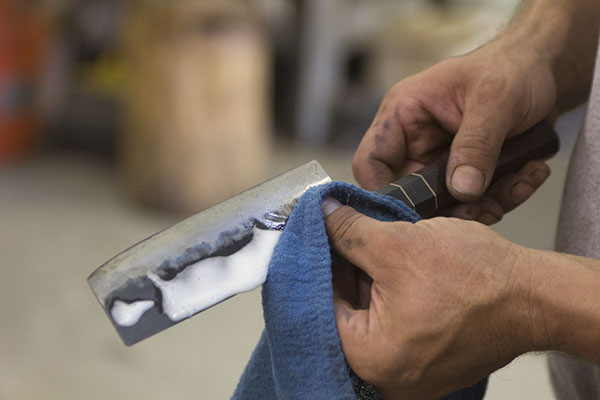
- Closely examine the blade for straightness by looking at it from multiple directions in natural light. Holding the handle away from you and sighting down the blade with the knife tip closest to you reveals the biggest tells.
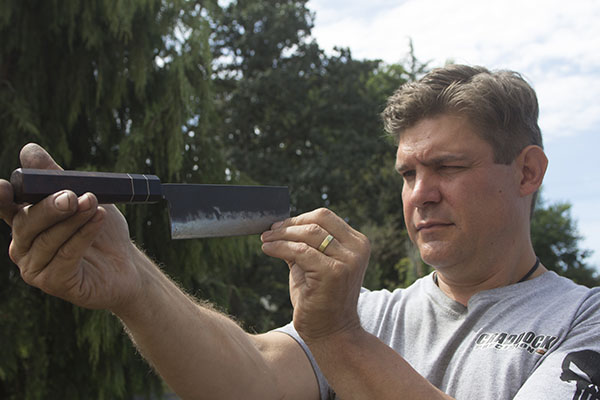
- Make a sharpening plan before you even get out your grinding apparatus (water stones work the fastest and are the most precise with moderate practice). Determine what goals you have for this sharpening session: fix a broken tip, repair a chipped blade or generally improve the overall cutting performance by thinning the secondary edge.
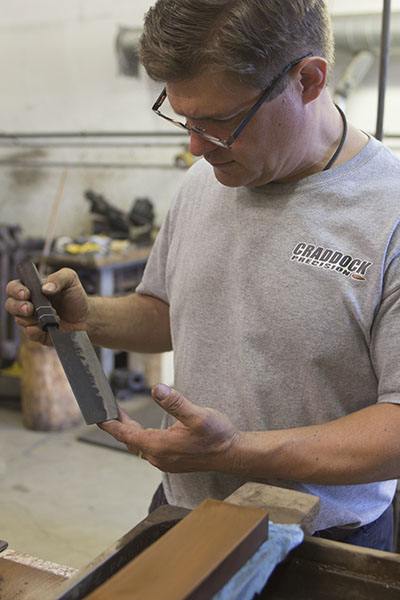
- Start aggressively grinding the secondary edge on the roughest sharpening surface you have. Grind for a few minutes on either side of the blade, removing steel where it will make the most difference. The thinner the secondary edge, the easier the blade will cut “through” things.
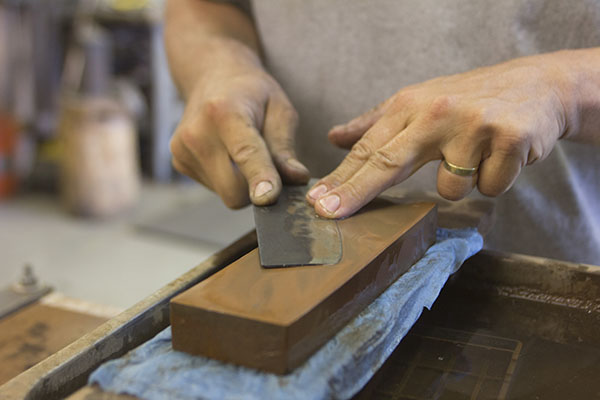
- Raise the secondary edge just slightly off and away from the stone and aggressively grind a new primary edge. The lower you maintain the primary edge angle, the keener the initial cut will be.
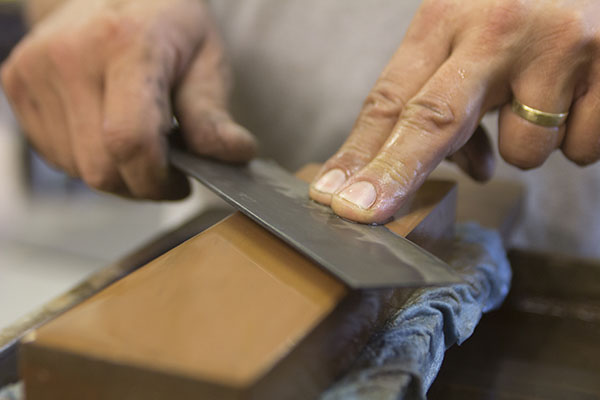
- Switch to a finer polishing abrasive, and polish out the scratches on the secondary edge from step 4.
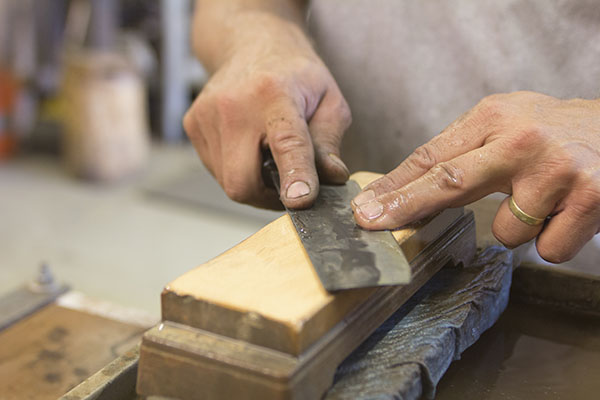
- Using the same fine abrasive, carefully hone the new primary edge from step 5.
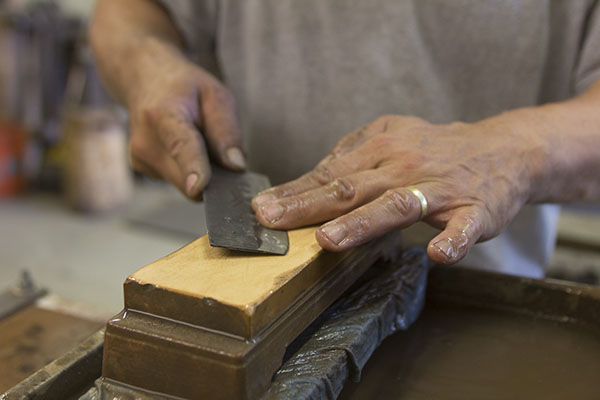
Some tips to keep in mind:
Keep sharpening sessions under twenty minutes to avoid frustration as a beginner. Sharpening is cumulative with results drastically improving over several sessions as the blade gets thinner. Once ideal primary and secondary edge geometry is obtained, regular sessions will only require a few minutes to maintain.
Learn the “Three Finger Test of Edge Sharpness,” available on Carter Cutlery’s YouTube channel. Your fingers will tell you everything you ever needed to know about a blade.
The ultimate test of a knife is actually cutting the everyday things that you would use that knife for.
Remember, cutting performance in a blade is not only about cutting into things (primary edge) but cutting all the way through it as well (secondary edge).
Get Sharp!
Murray Carter
Carter Cutlery


